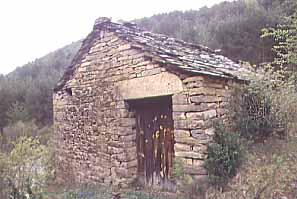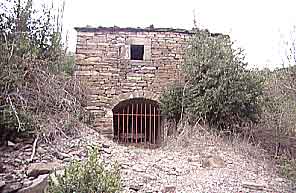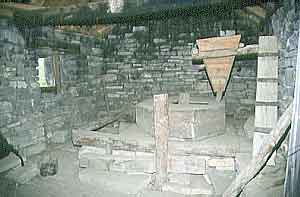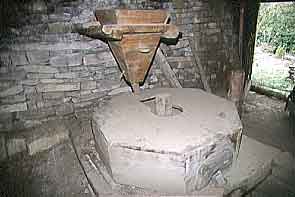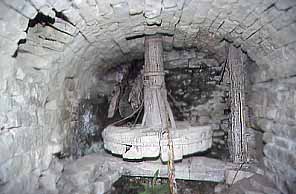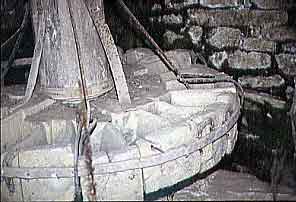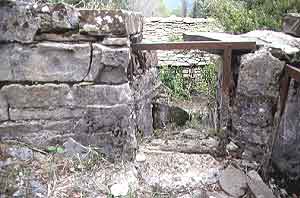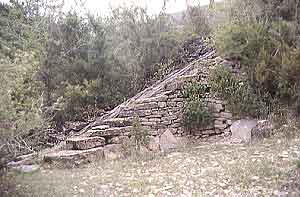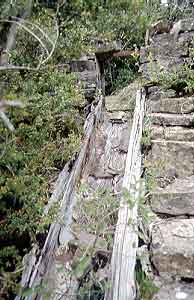Path: Introduction -
Visit the mills; catalogue - Ainielle

Mills in Alto Aragón — harinero
Ainielle

Ainielle is a village in the
Sobrepuerto region. The last occupant left in 1971.
From the main road between Sabiñanigo and Biescas turn of towards Oliván. Take the lower branch of the road at the entrance Oliván and follow the narrow road through the village. You'll come out at the other side and eventually reach a barrier where you can drop the car. A nice long walk lies ahead. Cross the barrier and follow the service road. After about an hour and a half you'll reach a bridge. The road, now on the right bank, steepens and after half an hour more you'll find yellow marks indicating the beginning of the path towards Ainielle. Find the church where the old path towards the mill starts. The first metres are a bit overgrown with blackthorn, but then the path becomes clear and easy to follow. The mill is at the bottom of the valley. You won't see it before you are really close. Total distance from Oliván : about 3 hours walk.
From the main road between Sabiñanigo and Biescas turn of towards Oliván. Take the lower branch of the road at the entrance Oliván and follow the narrow road through the village. You'll come out at the other side and eventually reach a barrier where you can drop the car. A nice long walk lies ahead. Cross the barrier and follow the service road. After about an hour and a half you'll reach a bridge. The road, now on the right bank, steepens and after half an hour more you'll find yellow marks indicating the beginning of the path towards Ainielle. Find the church where the old path towards the mill starts. The first metres are a bit overgrown with blackthorn, but then the path becomes clear and easy to follow. The mill is at the bottom of the valley. You won't see it before you are really close. Total distance from Oliván : about 3 hours walk.
All pictures: 05.v.2002 (cold showers of snow up there at 1350m)
